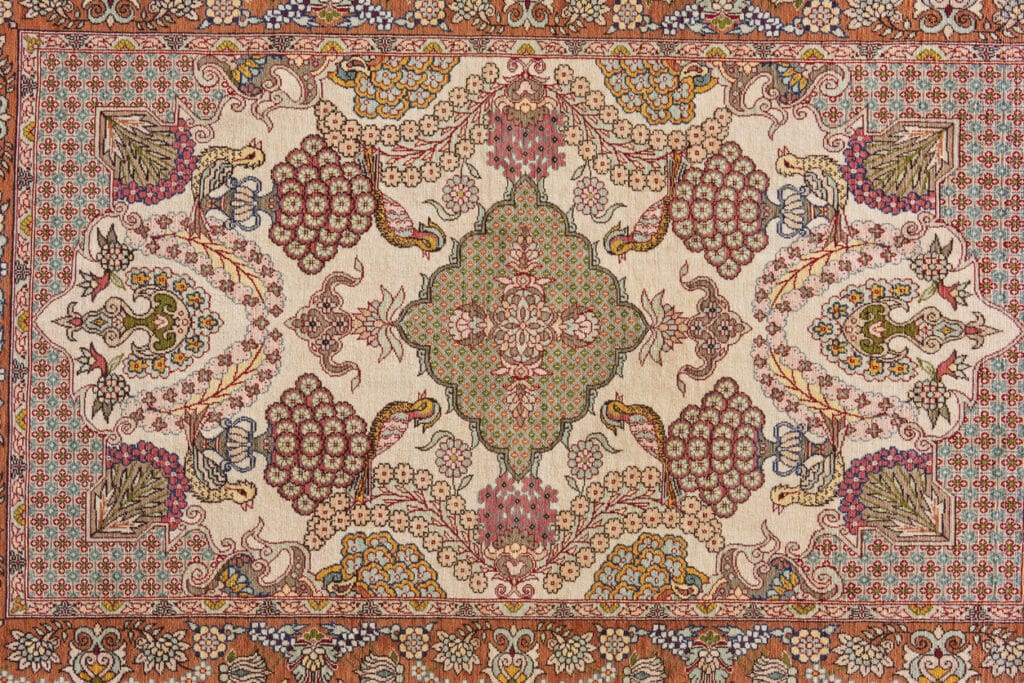There are many different types of beautiful carpets. We’ve talked previously about practical carpets, craft carpets, antique rugs, and we’ve touched on what makes those rugs different from each other both in use and value. Throughout the years carpet artisans have perfected ways to make art from fibers, and one example of this is the Aubusson carpet. What is an Aubusson carpet, and why is it such a treasure?
In addition to carpet buffs, readers of history, design, and novels or biographies about wealthy people will perhaps have heard of Aubusson carpets because this was the floor covering of the French nobility and, later, the very rich. France had a rigid social hierarchy prior to the French Revolution, and class was designated by specific rights and privileges. In 1627 the Hospice de la Savonnerie was established by royal order to create knotted pile carpets for the Kings and Queens of France to use in their many residences and also to give as diplomatic gifts.
Obviously a carpet that can only be made for a king will be highly valued and very coveted, the French nobility wanted carpets of similar quality to be available to them, so workshops were later established in the villages of Aubusson and Felletin to accomplish this. Aubusson was already famous for its pictorial tapestries, often of landscapes and hunting scenes, which were woven to be hung on walls in elite French residences as art.
Legends say that the area’s history of fiber crafting there dates back to the Saracens who remained in the area after Charles Martel’s victory at the Battle of Tours forced most of them from France. Later many Huguenot weavers of skill, fleeing religious persecution, settled there. They left after the revocation of the Edict of Nantes which reversed the trend of religious tolerance in France and forced them into exile. The carpet trade waxed and waned in France, directly affected by who was in power and how they felt about certain groups of people.
So many of the Aubusson carpets were made in the pileless tapestry technique that this is what an Aubusson carpet came to be known as, but many piled rugs were also made. Early carpets often resembled Oriental rugs, but over time the weavers began to use more floral and architectural patterns as the weavers of Savonnerie carpets were doing.
Today weavers in India, Pakistan, and China copy this European style of rug making which includes those same floral and architectural motifs. They reflect the period of time from which they emerged, the Renaissance, and, unlike many hand-woven carpets, are uniquely French. If you have an Aubusson carpet in your home, it is both a piece of history and a piece of art, so do take good care of it.


